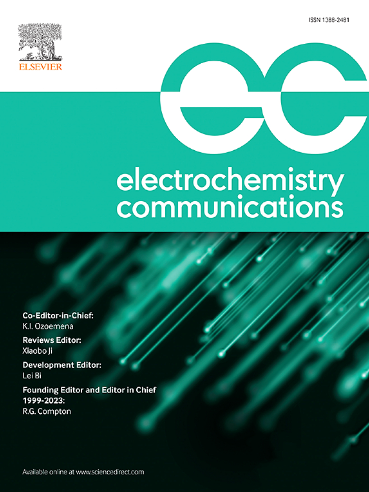Thin hafnia layer on silicon – Study of interfacial charging and charge transfer by resistometry and photoelectrochemistry
IF 4.7
3区 工程技术
Q2 ELECTROCHEMISTRY
引用次数: 0
Abstract
Oxide layers on silicon (Si) can effectively reduce the surface recombination velocity due to chemical and field-effect passivation, thereby increasing efficiency of PV devices. We propose simple experimental technique that provides information on interfacial Si/oxide charge. Here, interfacial charging in atmosphere of crystalline p-Si with thin hafnia layers deposited using atomic layer deposition and sol–gel techniques were studied by means of the transverse electric resistometry. The samples exhibited the current–voltage (I–V) characteristics, which were analogous to those known for a p-n junction when the Si surface is negatively charged. We also demonstrate the detection of charging effects in electrolyte by measuring the photo-induced capacitance, potential, resistance, and current. The charge transfer inhibition during hydrogen evolution reaction is shown to depend on interfacial charging effects rather than resistance of HfO2 layer. The proposed methodologies can be extended to a wider range of passivating oxides on semiconductors.

求助全文
约1分钟内获得全文
求助全文
来源期刊

Electrochemistry Communications
工程技术-电化学
CiteScore
8.50
自引率
3.70%
发文量
160
审稿时长
1.2 months
期刊介绍:
Electrochemistry Communications is an open access journal providing fast dissemination of short communications, full communications and mini reviews covering the whole field of electrochemistry which merit urgent publication. Short communications are limited to a maximum of 20,000 characters (including spaces) while full communications and mini reviews are limited to 25,000 characters (including spaces). Supplementary information is permitted for full communications and mini reviews but not for short communications. We aim to be the fastest journal in electrochemistry for these types of papers.
 求助内容:
求助内容: 应助结果提醒方式:
应助结果提醒方式:


